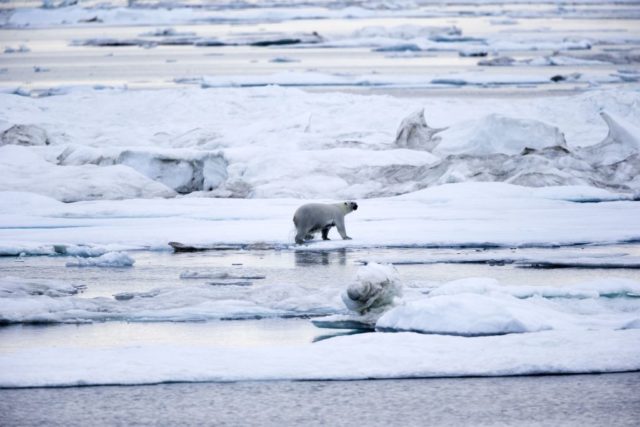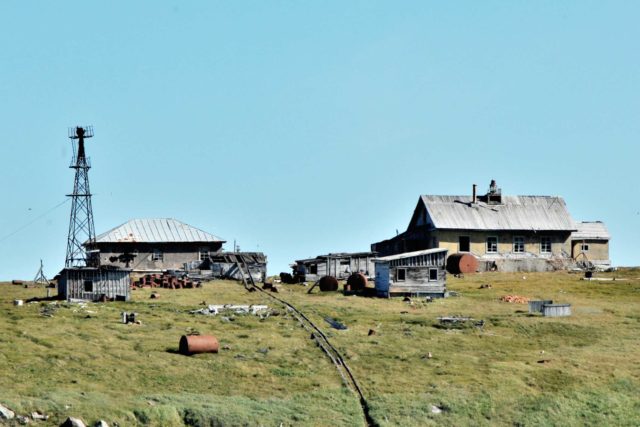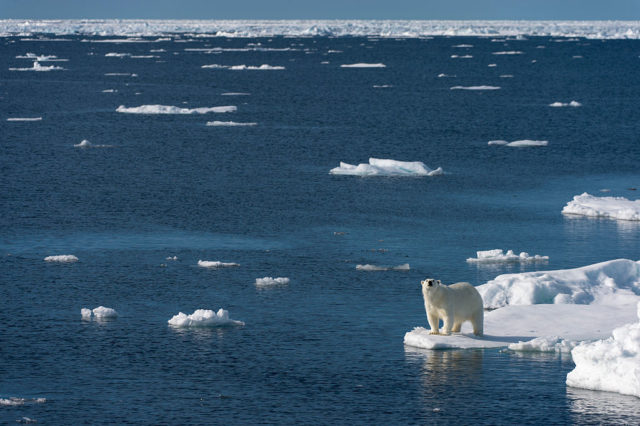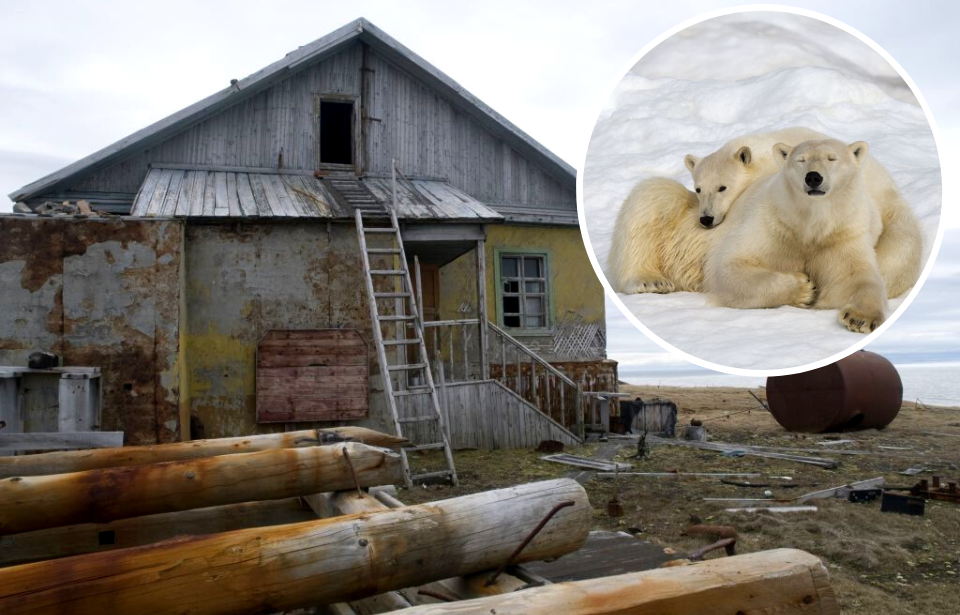When Photographer Dmitry Kokh set off to make the 1,200-mile journey to Russia’s remote Wrangel Island, he hoped to come face to face with the polar bears of the Arctic. Although he never reached Wrangel Island, he stumbled upon an even greater opportunity – an abandoned Soviet village taken over by 20 polar bears. Despite their aggressive nature, Kokh managed to capture surreal images of the bears rummaging through run-down buildings as if it was their own home.
Kokh has since been named the 2022 Nature Photographer of the Year for his incredible, haunting photo of two polar bears staring directly into the camera on the front steps of a crumbling building, which he titled “House of Bears.”
Abandoned on Kolyuchin Island
While en route to Wrangel Island in 2021 – a trip he had been planning for two years – Kokh’s ship was forced to seek shelter on the small island of Kolyuchin. The island was originally inhabited by the Chukchi, a group of Siberian Indigenous people. In 1933, the Soviet ice-breaker Chelyuskin was crushed by pack ice not far from the island, and the air rescue mission that saved the crew made them national heroes. In 1943 a polar research station was established on the western part of the island until it was closed in the 1980s. An amateur radio service also operated on the island and was ultimately abandoned by 1992.
Next up is the Urban Wildlife category. Dmitry Kokh is the winner with this haunting scene of polar bears shrouded in fog at the long-deserted settlement on Kolyuchin.
As they explored the long-deserted settlement, Dmitry used a low-noise drone to share this #WPY58 moment. pic.twitter.com/owjc2mU4lt
— Wildlife Photographer of the Year (@NHM_WPY) October 11, 2022
The various settlements throughout the island’s history have left a collection of abandoned buildings in different stages of decay. It’s unknown how many years had passed since a human stepped foot on the island prior to Kokh’s arrival. “I had a dream about photographing polar bears for a long time,” Kokh wrote in an exclusive article in The Guardian. “Some time ago my hobby, wildlife photography, ceased to be just a hobby and turned into a large part of my life. And if you devote so much time to an activity then your goals should be ambitious.”
An unexpected discovery
Kokh chose Wrangel Island as the place where he would fulfill his polar bear dream. The island is a UNESCO-protected nature reserve that is heavily populated by polar bears and is especially popular with mother bears looking for a safe place to raise their cubs. But with the closest land mass over 1,000 miles away, reaching Wrangel Island is no easy feat.

After two years of preparations and planning, Kokh set sail with a crew on a small ice-class sailing yacht from the Chukotka Autonomous Okrug, the northeasternmost part of Russia. Sailing west around the coast toward Wrangel Island, Kokh spotted whales, sea lions, seals, and brown bears. “Days and weeks passed,” said Kokh. “Landscapes changed dozens of times: sunny pebble beaches, steep cliffs, mountains and tundra.” The sailors were perplexed to see pieces of sea ice floating in the ocean in the summer months, but continued their journey north.
Anticipating a bad storm, the captain of the ship landed the boat on Kolyuchin Island. The island is dotted with abandoned wooden buildings that are remarkably still standing despite intense arctic weather. Once on the island, Kokh and the other crew on the ship noticed movement from the windows of the houses. “Someone took out binoculars and we saw the heads of polar bears,” Kokh recalled. “Fog, a place long deserted by people, polar bears – it was the perfect setting.”

On the island, they could see at least 20 polar bears, mostly males, traversing the rubble and rocky terrain of the island. Using a drone equipped with a camera, Kokh was able to get near enough to the bears to photograph them huddled together inside the buildings. Once they became accustomed to the buzzing sound of the drone, it was as if they were posing for their close-ups.
Why were the bears cozied up indoors?
Kokh asked Anatoly Kochnev, one of Russia’s leading polar bear experts, why the bears seemed to love sitting in the buildings. Kochnev explained that polar bears are very curious creatures that could easily be tempted to explore windows and doors left ajar. The biologist also believes their behavior is due to a much more unfortunate reason: polar bears had long been hunted in the area and were using the homes as protection from human predators.
When polar bears move in next door https://t.co/0ZWfwPdebT 📷 Dmitry Kokh pic.twitter.com/joltk8Dwdc
— Prof Jamie Woodward (@Jamie_Woodward_) January 24, 2022
Kochnev, who has spent time on Kolyuchin Island studying polar bears, also informed the photographer that he was surprised to see so many bears on the island at one time. It actually has to do with the same sea ice the sailors saw floating in the water while traveling along the Russian coast. No one knows why, but once every nine years the sea ice drifts closer to shore than usual, causing the polar bears to return to their abandoned homes at the old polar station on Kolyuchin Island instead of following the ice north.
Once Kokh and the sailors reached Wrangel Island, the nine-year theory seemed to be correct. The island, usually swarming with polar bears, had no bears at all.

“Though several months have passed since the expedition, I still sometimes see polar bears in decaying windows before my eyes when falling asleep,” Kokh reflected. “And looking at the main photo in my life at the moment, the one named House of Bears, I think that sooner or later all human-made things on Earth will cease to exist – buildings, cars, and computers will all meet their end. But life is eternal.”
More from us: Houtouwan Village Has Become Almost Entirely Consumed By Nature
The photographer left readers with a message for humanity to better protect wildlife and the environment from the threats of pollution and climate change: “These bears will continue to hunt, swim among ice floes and explore islands even when civilization ceases to exist. But life will remain eternal only if we humans finally begin to take care of the planet and the living creatures that need our protection.”
